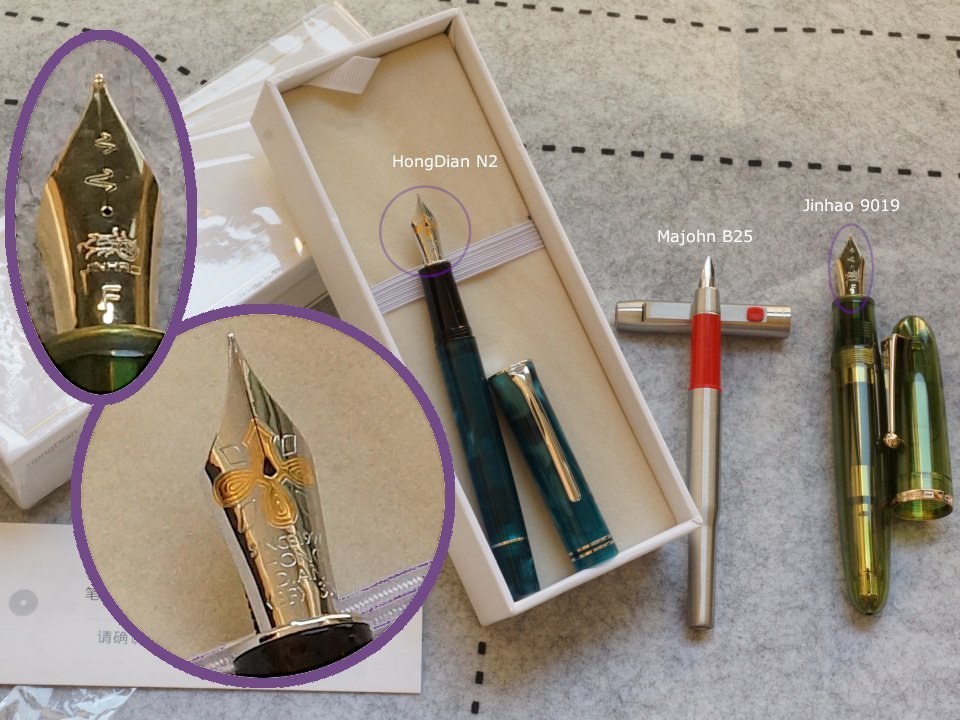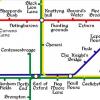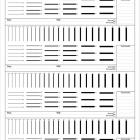reading cursive
READING CURSIVE
174 members have voted
-
1. Which of the following statements best describe[s] your experiences reading cursive?
-
I can read any style of cursive very easily, and I cannot remember a time when I couldn't read cursive.82
-
I can easily read any style of cursive, but I remember a time when I couldn't read cursive.27
-
I remember actually being taught to read one/some/all of the cursive letters.25
-
I don't remember actually being taught to read cursive -- I think I just "picked it up" from seeing it around me.15
-
I wasn't actually taught to read cursive: I "picked up" how to read it from learning how to write it.36
-
Having lessons in writing cursive didn't teach me how to read it: in handwriting lessons, I copied examples without actually being able to read what I was copying.3
-
I can read some styles of cursive, but I can't easily read (or I can't read at all) various other styles of cursive. [If you choose this choice, make a posting to state what styles of cursive you can and cannot read)17
-
I can read cursive (or I can read some cursive) now, but I only gained this ability in adulthood and/or years after my handwriting instruction ended. (If you choose this, make a posting to give details.)2
-
I cannot read any style of cursive whatsoever.2
-
The inability to read some/all cursive writing has made life difficult/unpleasant for me and/or for other people I have met. (If you choose this, make a posting to give details.)2
-
other (please make a post to explain)4
-
-
2. What do you consider the best/quickest/easiest/most logical technique[s] for making sure that students (or others who might not know cursive) become competent at reading cursive? (Consider making a posting to explain why you consider your choice the best/easiest/quickest/most logical.)
-
Don't teach anyone to read cursive because it's unimportant.4
-
Don't teach anyone how to read cursive because they will simply "pick it up" from the fact that they can see other people writing in cursive, they can see cursive fonts on products, and so on.5
-
Don't teach anyone to read cursive writing because they'll "pick up" the skill from learning to write cursive (e.g., from copying things written in cursive)44
-
Teach people to read cursive by teaching them to memorize the looks of these letters (e.g., "Look at this. This is a cursive G. What is this, class?")18
-
Teach them to read cursive by showing them how these developed from other letter-shapes that they can already read (e.g., to make sure that students can recognize a cursive G when they see one, sketch its relationship with the simpler and more familiar form that they already recognize -- show how this gradually became the kind they'll have to recognize when they see it today.)77
-
Teach people how to read cursive writing by "easing them into it": give them reading material that starts in a non-cursive font but that gradually becomes more and more "cursive-ish" as the story goes on. (E.g., successive sentences/paragraphs of the story could go from a typical printed/"book" font to an Italic font to a swash Italic font to an Italic/cursive hybrid, to simple cursive, to more complex cursive, to increasingly familiarize the reader with increasingly cursive modes of writing.)32
-
other (please make a post to explain)12
-
-
3. Which of the following best describes your own view of the relationship (if any) between cursive letters and other letters?
-
There is not/ there cannot be any relationship between the two. The cursive alphabet and the printed alphabet have nothing to do with each other.7
-
There is a relationship between cursive writing and printed writing, but it is not always an obvious relationship -- the relationship between cursive and printed "G" (in typical USA cursive models) is not at all obvious, but the relationship is still there and can be demonstrated for (e.g.) teaching-purposes.126
-
The relationship between cursive letters and other styles of letter is so obvious, for all letters, that I cannot imagine anyone NOT finding it completely self-evident and obvious.39
-
other (please make a post to explain)5
-
-
4. With fewer and fewer people writing cursive or even able to read it (in North America, at least), do you think that we will eventually no longer have enough of a "critical mass" of cursive-users to maintain the teaching of cursive?
-
No -- there is no danger that cursive will go extinct, that we will run out of people able to teach it, etc.35
-
Yes -- this is already happening, or I expect I will live to see it happen. Young people living today (who will become the next generation's parents/teachers) do not write cursive and/or they do not read it, so how could they teach the next generation to read and/or write cursive?85
-
I don't expect to live to see it happen, but it will probably happen within the lifetime of other people I know/other people on this Forum.46
-
other (please make a post to explain)8
-
-
5. Imagine that a publisher of cursive handwriting schoolbooks asks you for advice. The publisher says: "HELP! With fewer and fewer people willing to write cursive or teach it, we're rapidly running out of customers willing to buy our cursive books. Even those teachers/schools/parents who still buy our material are finding that they cannot use it effectively because they don't know cursive to begin with: they can't even read the examples, so they stop using the book. We don't want our company to die, we don't want to leave the handwriting field, we DON'T at all want to change our line from cursive to print-writing, and we don't want to switch over to offering only books on 'printing' because we believe it would be wrong to teach only 'printing.' What do you advise?"
-
I tell the publisher: "Give up -- shut down your handwriting operations entirely. Switch over to another subject, get out of the publishing business, or just shut down."12
-
I tell them: "Keep on with cursive, no matter what. No matter how many customers stop buying cursive books, you must continue to specialize in cursive: no matter what. If your company dies, at least it will die nobly."27
-
I say: "Stay in business by discontinuing cursive. Put out print-writing books instead, no matter how terrible this makes you feel, because at least those will have some chance of selling."8
-
I suggest: "Since your customers won't accept cursive and you don't want to go with just print-writing, I advise finding some handwriting style that they CAN accept and that still isn't printing. This will allow you to remain a handwriting publisher, attract new customers, and/or re-attract the customers you may have lost."54
-
I point out: "Whatever you decide to do, if you stay in the handwriting field at all, you have a responsibility to make sure that your customers and their students can still read cursive. Even if you decide that you have to give up on cursive and teach some other style instead, make sure that anyone using your materials will still learn how to READ cursive."68
-
other (please make a post to explain)20
-
-
Forum Statistics
355.5k
Total Topics4.6m
Total Posts -
Member Statistics
128,430
Total Members18,857
Most OnlineNewest Member
todoroki
Joined -
Images
-
Albums
-
One-Off Post Attachments 2
- By LizEF,
- 0
- 112
- 90
-
Problems
- By A Smug Dill,
- 27
-
Chinese pens
- By A Smug Dill,
- 22
- 100
-
00-Feb-March-April2025
- By yazeh,
- 0
- 0
- 78
-
USG 10
- By USG,
- 0
- 0
- 79
-

















.thumb.jpg.f07fa8de82f3c2bce9737ae64fbca314.jpg)



desaturated.thumb.gif.5cb70ef1e977aa313d11eea3616aba7d.gif)







Recommended Posts